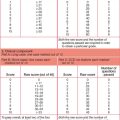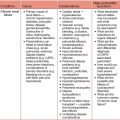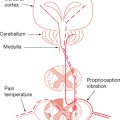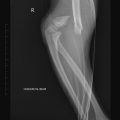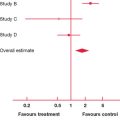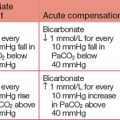Chapter 8 Publication/presentation requirement
Regulation 4.10
Purpose
Regulation 4.10 serves a number of purposes. Most FACEMs are involved in research during their careers, whether as investigators or recruiting patients for studies being run by others. This component is designed to give trainees insight into or ‘a taste of’ how research works. Even for those who are not involved in research later in their careers, it is imperative to be aware of study design and the concepts of evidencebased medicine in order to critically appraise the research of others. Being directly involved in a research project provides valuable insight into the particular challenges of conducting quality research. This is a two-way process, making you more sensitive to the importance of ensuring good study design and also more astute in detecting methodological flaws. Finally, of course, the research thus performed aims to boost the collective knowledge of issues related to emergency medicine and ultimately to improve patient care.
Format
Research undertaken for the 4.10 may be presented in a number of ways:
Oral presentation
If you are comfortable with public speaking and have prepared and know your project well, you will find an oral presentation far less stressful. The particular advantage is that the decision to accept/reject your proposal will be made in a known time frame without the uncertainty associated with publication time lines.
Preparation
In addition, time spent carefully considering all of the following before you begin is essential.
Individual or team
Decide from the outset whether you work better by yourself or with one or more colleagues. If there are a number of you at the same stage of training, you may wish to work collaboratively on several projects, with one of you acting as lead investigator (and author) for each project. Sharing the workload and addressing the issues that arise as a group can be helpful. If you do work with others, however, choose very carefully: you want to work with people who are experienced and compatible and who will pull their weight.
Selecting the topic
When deciding on a topic, there are three things to bear in mind:
Once you have selected a topic, conduct a literature review to ensure that the answer to your question is not already available. A well-conducted literature review (see Chapter 9) may also provide other research ideas, suggest ways of streamlining your project and give valuable insight into the particular design that will best suit the topic. Because of the time frame involved from start to finish, you should repeat the literature review prior to final presentation, in order to ensure that other relevant information has not come to light during this interval.
Study design
Chapter 9 will provide useful suggestions on different types of study designs. It is unlikely that your first research project will be a multi-centre, randomised controlled trial assessing a major health issue. You will need to develop a balance between higher levels of evidence, which require higher levels of expertise and time, and lower levels of evidence where simpler designs are appropriate.
The design and conduct of a study is similar to critically appraising a research paper, but done in reverse (for more detail, see Chapter 9). A study needs to be methodologically internally valid before even considering its generalisabilty or applicability. Time taken in meticulous study design is well worth it, as mistakes in design are not easily rectified during the study and may invalidate the study results.
Write your study hypothesis and methods before you commence the study. Ensure that the aim of the study is clear and will be addressed by the methods chosen. The typical headings to consider when writing the protocol for your randomised interventional study are provided in Table 8.1. These can also be applied to other study types, although some sections (e.g. interventions) may not be required or be appropriate. These items also form the basis of submissions to ethics and regulatory bodies. Time spent considering each of these items and how they apply to your project will make such submissions and your subsequent project write-up much easier.
TABLE 8.1 A template for a randomised controlled trial protocol
Source: adapted from www.practihc.org/toolindex.htm.
Statistical analysis
Issues regarding sample size, comparison between groups and specific method(s) to analyse difference will vary depending on the topic chosen and study methodology. Some of these issues are addressed in more detail in Chapter 9. Expert statistical advice is required early in your project to ensure that each method chosen is appropriate and your project is achievable.
Time required
Be aware that estimates of likely subject numbers are generally well in excess of actual suitable subjects. As a rough guide, we suggest you assume that no more than one in four eligible ‘patients’ or subjects will actually be recruited successfully. For most studies, including those where data are collected from medical records, we suggest you undertake a ‘pilot’ study before commencing the main study. This will help clarify whether your assumptions have been correct regarding numbers, as well as provide insight as to the feasibility of collecting the data you require. A well-conducted pilot study may enable you to make small changes that will greatly improve the efficiency of your overall project.
The write-up
The write-up is based on a generic IMRaD formula:
The introduction and methods sections are substantially based on the same sections in the study protocol, with the results and discussion sections requiring substantial new work. The discussion section needs to be written in the context of the study findings. This will require a balanced approach and involves presenting literature both supporting and refuting your study findings. As mentioned earlier, we recommend that you repeat your original literature search at the conclusion of your study to ensure that you are aware of any recent publications of relevance. Clinical relevance and generalisabilty also need to be covered in the discussion section, and in addition, we recommend that you include a section acknowledging limitations and further research prior to your structured conclusion/summary. If you have received significant assistance from others, they should also be acknowledged.
On the day
Conference presentations and poster sessions
Regardless of your mode of delivery, three adjudicators will mark you. Adjudicators are preselected to ensure that they do not have a conflict of interest with your project. One acts as the designated lead adjudicator, and each marks you independently against specified criteria detailed on the College website. At the end of the session, they meet. If all three mark you as a pass, or if two (including the lead) mark you as a pass, you will be notified on the day that you are successful. However, you may still pass if you do not fulfil these requirements, as all papers are referred to the Board of Censors for a final decision.

